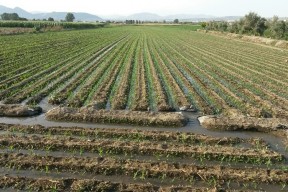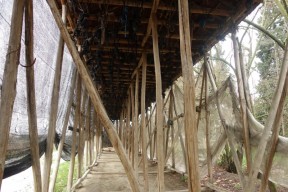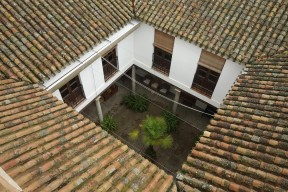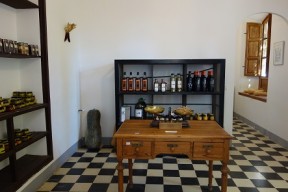In the region of the Vega
Cortijo del Pino is a farmhouse where different irrigated crops have been grown over the years. At the end of the 19th century, sugar beet was the primary crop, and later, hemp and linen. In the last decades, with our family, the cultivation of tobacco became more and more important in the Vega region, and in a few years it would become the main crop. It was at this time that several drying sheds were annexed to the building, some of which still remain today.
Building structure
The main body of the house has a square floor plan. It is structured around a central courtyard with stone columns, two storeys high and a turret with a dovecote. The second courtyard or animal pen is located next to the first one, where the agricultural and livestock buildings were located: hayloft, barn, cowshed and animal pen.
A move towards diversification
Successive inheritances and the parcelling of the land resulted in very low profitability, and the disuse of most of the building led to its deterioration and the impossibility of its maintenance. Thus, the adaptation of the building as a tourist rural accommodation was a decisive step towards its conservation.
In 1998, we began the rehabilitation of some of the most deteriorated parts of the farmhouse and, little by little, we have been recovering most of the building. As of today, we have four rural houses offered as accommodation: the Atrojes, located around the columned courtyard; the Cuadra and the Tinao, occupying what was once a cowshed, and the Torreón, which was once a fruit drying shed and dovecote. At all times, we have tried to recover most of the existing constructive elements and to enhance the value of the whole building.
In 2007, we brought back into production some of the old lands that belonged to Cortijo del Pino and we have certified them as organic, trying to promote a more sustainable agriculture, more respectful with our environment and with people’s health.
In 2009, we planted 2 hectares of fruit trees: apple, pear, plum and apricot trees, with the idea of having a variety of fruit throughout the summer and supplying local markets. Since 2011, as an integral part of an association of organic producers and consumers, El Vergel de la Vega, we market our products to different consumer groups in the city and participate in the Ecomercado de Granada, a local organic market, which is held on the first and third Saturday of every month.
At the Cortijo we also have a small point of sale of local packaged products where our customers can buy.
In the future
It is our aim to make our farm more sustainable every day and to continue to grow in accordance with the existing resources, taking care of them and revaluing all this heritage that we have been so fortunate to manage.
Cortijo del Pino floor plan [PDF]
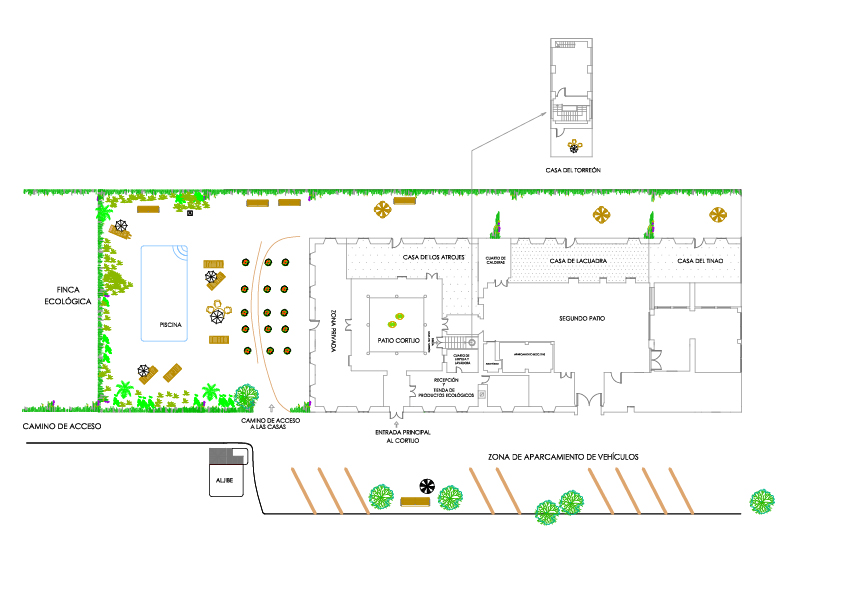
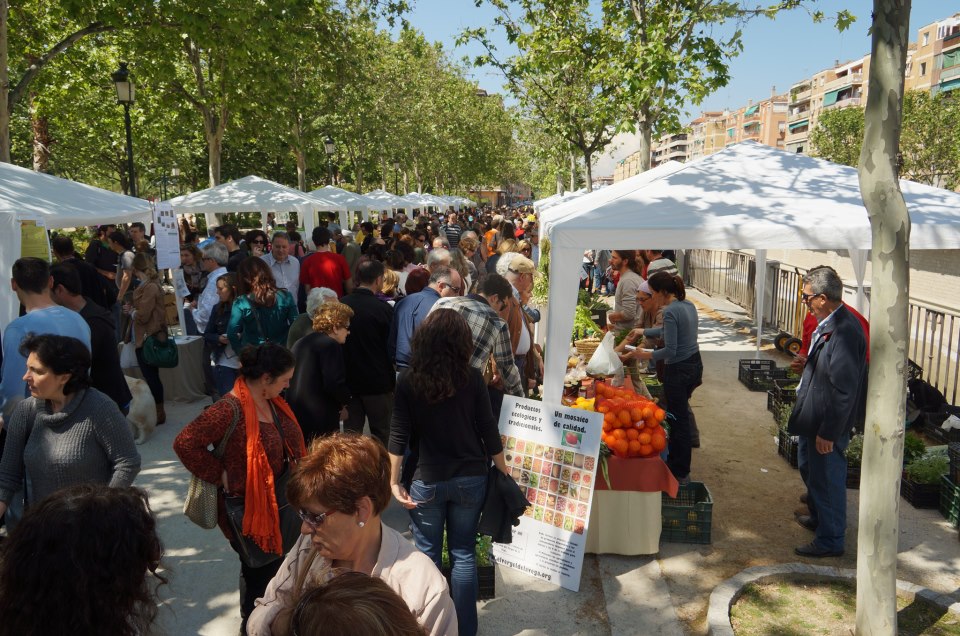
The building is listed as an architectural element of interest in the province of Granada and is included in the book on large farms in Andalusia published by the Regional Department of Public Works and Transport, titled “Cortijos, haciendas y lagares. Arquitectura de las grandes explotaciones agrarias de Andalucía”, 2003. The lime tree next to the cistern is also catalogued by the Junta de Andalucía and is included in its publication “Especies singulares de Andalucía” (Singular Species of Andalusia).
This farm is certified by Agrocolor, an organic farming certification body authorised by the Junta de Andalucía under number AG-02/844/CI-1, date of registration: 1 October 2007.
